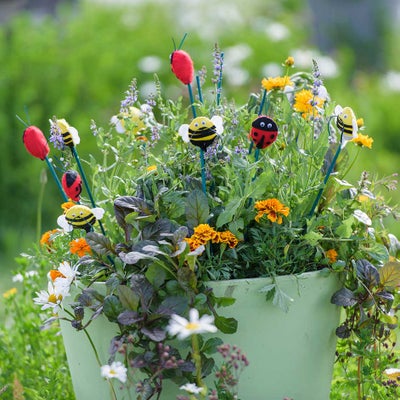
Quick facts
Places in containers where wildlife finds a home;
Among clusters of pots and containers
In the damp spaces beneath pots
Away from ground predators in a hanging basket
In a container pond
Life in containers
Containers let you increase the number of ecological niches in a garden. Put pots into a hot courtyard or decked area and suddenly there are new cools spots within the and underneath the pots where springtails, earthworms and all manner of invertebrates can now survive. Meanwhile, nectar- and pollen-rich plants in the pots will start to draw in the bees, hoverflies and other pollinators.
A fun thing about growing in containers is that you can be really creative in a small space. Here are some of the ways you can use pots and containers to make a great habitat for wildlife;
- Basket heaven
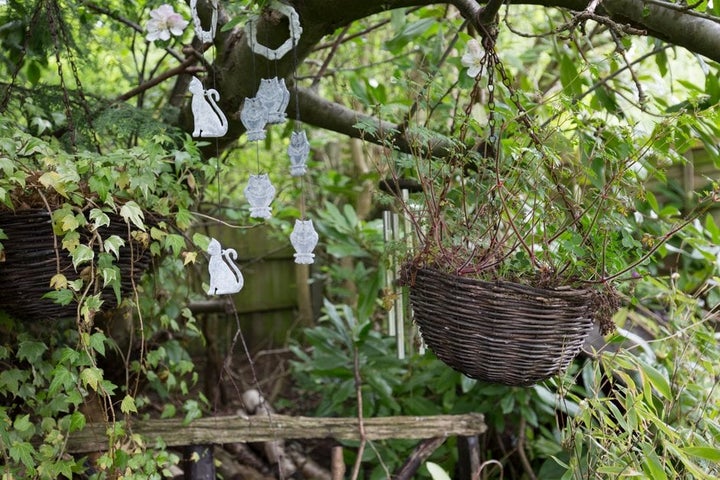
- Go for pollinator favourites such as fuchsias and nasturtium. Experiment with less usual British hanging basket plants such as bird’s foot trefoil, ivy-leaved toadflax and herb Robert. Baskets made from natural materials such as wicker and lined with moss from the lawn can end their lives on the compost heap, feeding many worms and other recyclers.
- Window box retreat
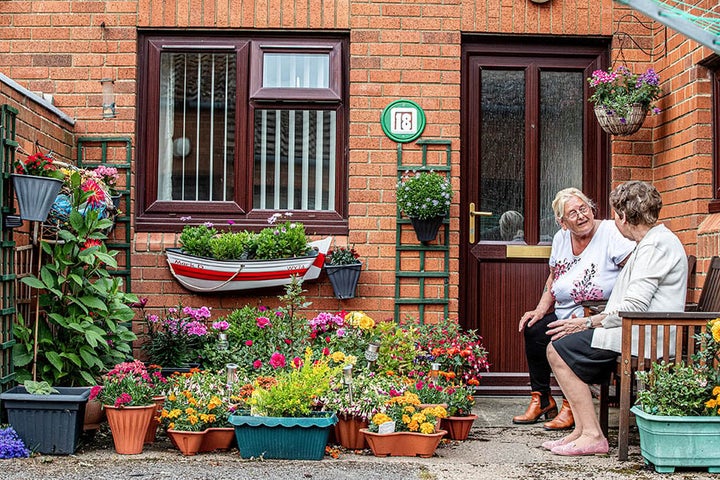
- Reward bees with a window box full of heathers, candytuft or lavender, depending on the season. On a sunny wall use thymes, osteospermum or zinnias. Even if you are high up in a high rise flat, your box or balcony planters will prove an oasis from the elements.
- Sink or trough
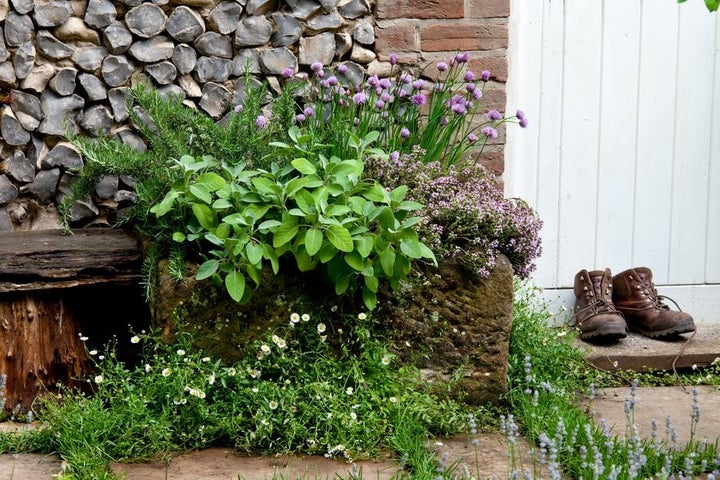
- Add stones or sections of broken terracotta pots to the surface of your sink for butterflies to bask on and plant with pollinator-friendly herbs, thrifts (Armeria), Erigeron karvinskianus and Campanula carpatica. Troughs also lend themselves to miniature crevice gardens made by standing pieces of slate on their ends with soil in between. Ferns and cool-loving invertebrates will enjoy the crevices.
- Wooden crate
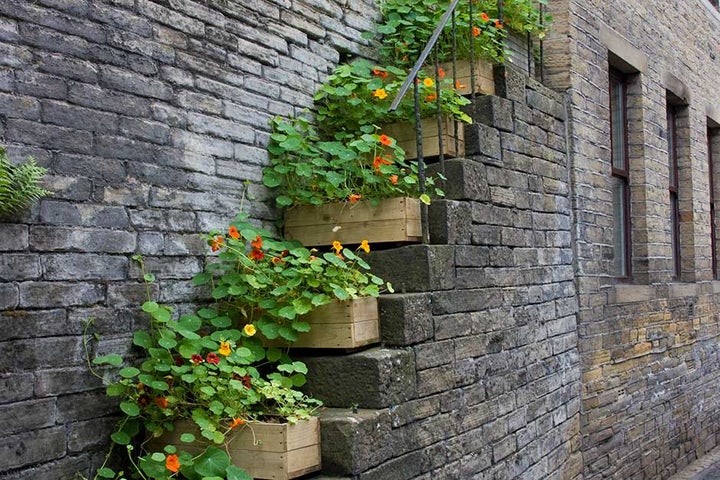
- Use an old fruit box to hold seasonal pots of mini daffodils and tulips. Or line it out with polythene before filling with a peat-free compost and sowing nasturtiums or a mix of cornflowers, corn marigold and poppies. As the wood rots it will play host to woodlice and worms.
- A tier of pots
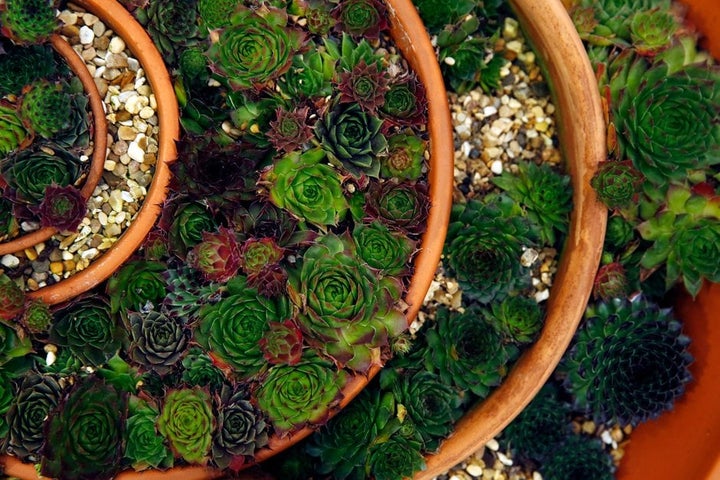
- These are great to get some height. Use a free-draining mix for houseleeks or sedums. In smaller stacks try grape hyacinths and crocus.
- Large planters
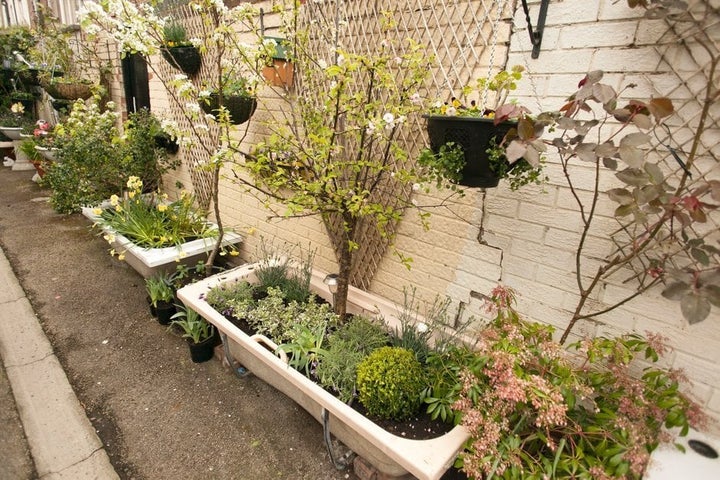
- If you can fit in larger planters which hold a decent amount of compost, there’s scope to grow shrubs and small trees. If kept watered, even fruit trees with their insect-friendly blossom can be grown. Peaches and apricots blossom well on protected walls. Crab apples offer reliable fruits in the autumn for birds.
- Pond in a pot

- Container ponds are so great to make, especially if you have children to help. Even the smallest mini pond can have a frog make it a home and be used by birds to drink from. Follow the link here to our wildlife-friendly container pond step-by-step.
Experiment with grouping pots together to form islands of greenery on your balcony or patio. If you can have at least one undisturbed cluster of pots, ideally with a nice dense shrub in one of the pots, this will make an attractive spot for birds looking to nest. Just be sure to carry out any repotting in early spring, before the nesting season starts.
What to plant in pots for wildlife?
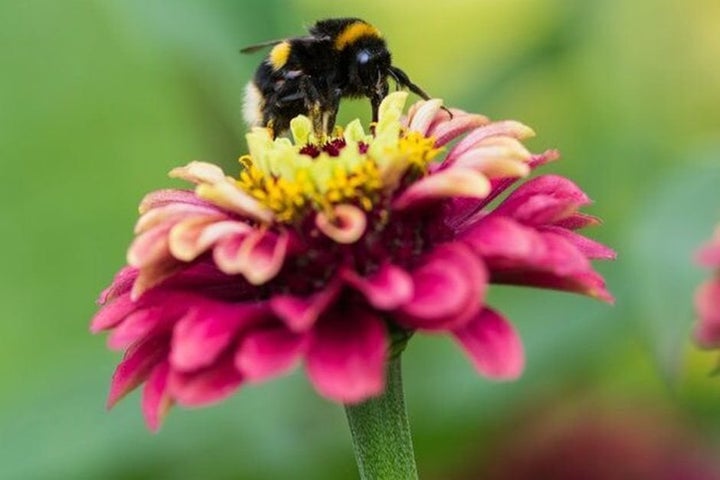
Here are some great ideas for what to grow.
In baskets
Aubrietia
Bidens
Calibrachoa
Nasturtium
Sanvitalia (creeping zinnia)
Lotus corniculatus (bird’s foot trefoil)
Ivy
Tomato ‘Tumbler’
Sunny containers
Single-flowered English marigolds
Californian poppies
Fairy toadflax
Heliotrope
Snapdragons
Single-flowered dahlias such as ‘Mignon Series’
Sing-flowered zinnias such as 'Profusion Series'
Herbs, especially marjoram and chives
Lavender
Shady containers
Begonia
Bugle
Fuchsia
Heuchera
Hosta
Ivy
Bigger planters
Bay
Ceanothus (Californian lilac)
Choisya ternata(Mexican orange blossom)
Hebe
Single-flowered roses
Skimmia
For more inspiration, discover our 10 favourite patio plants for bees.










